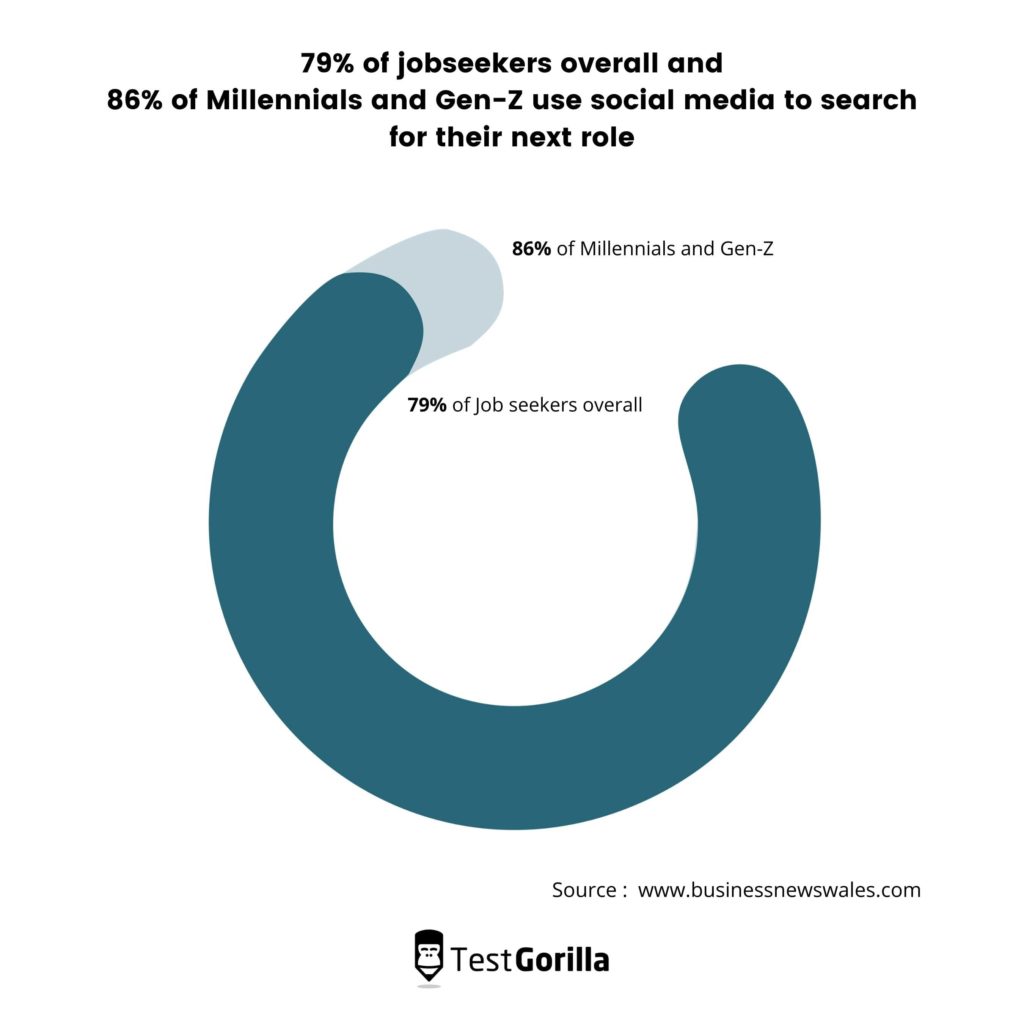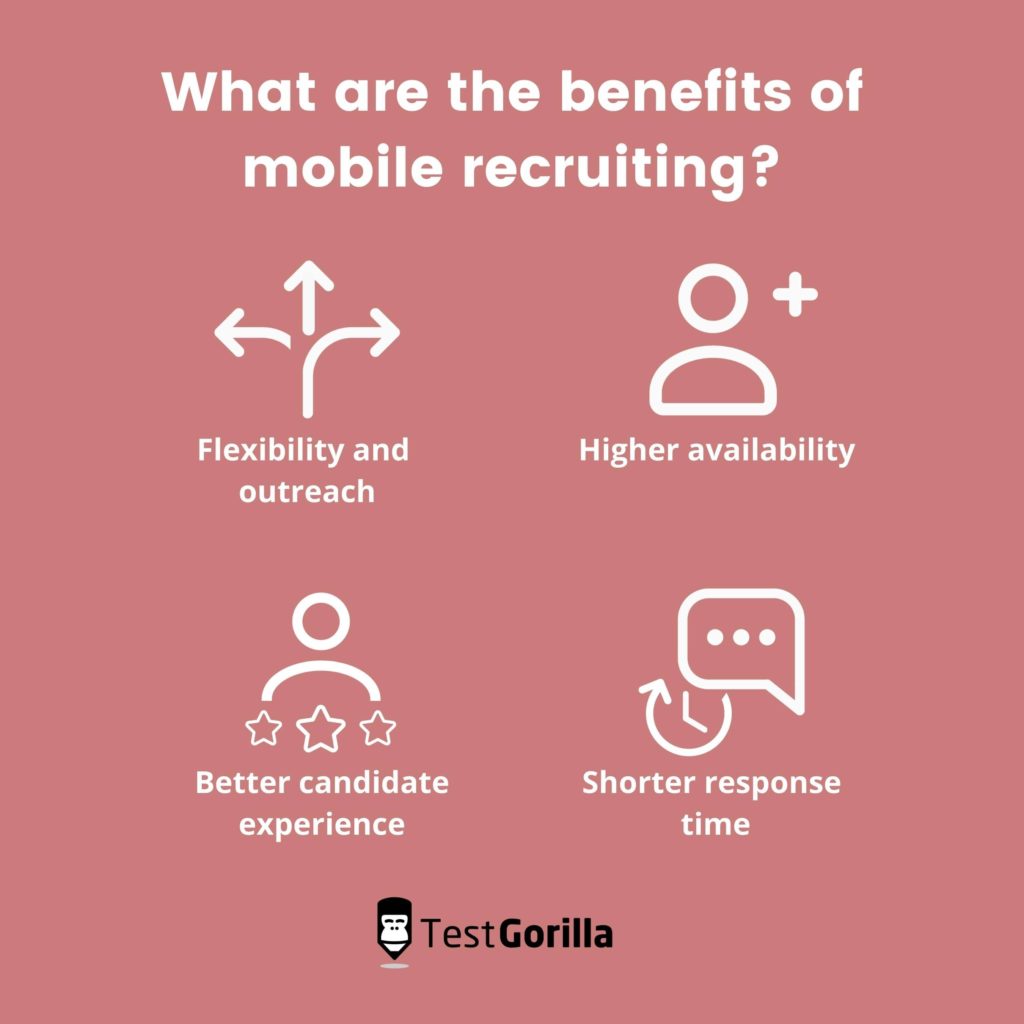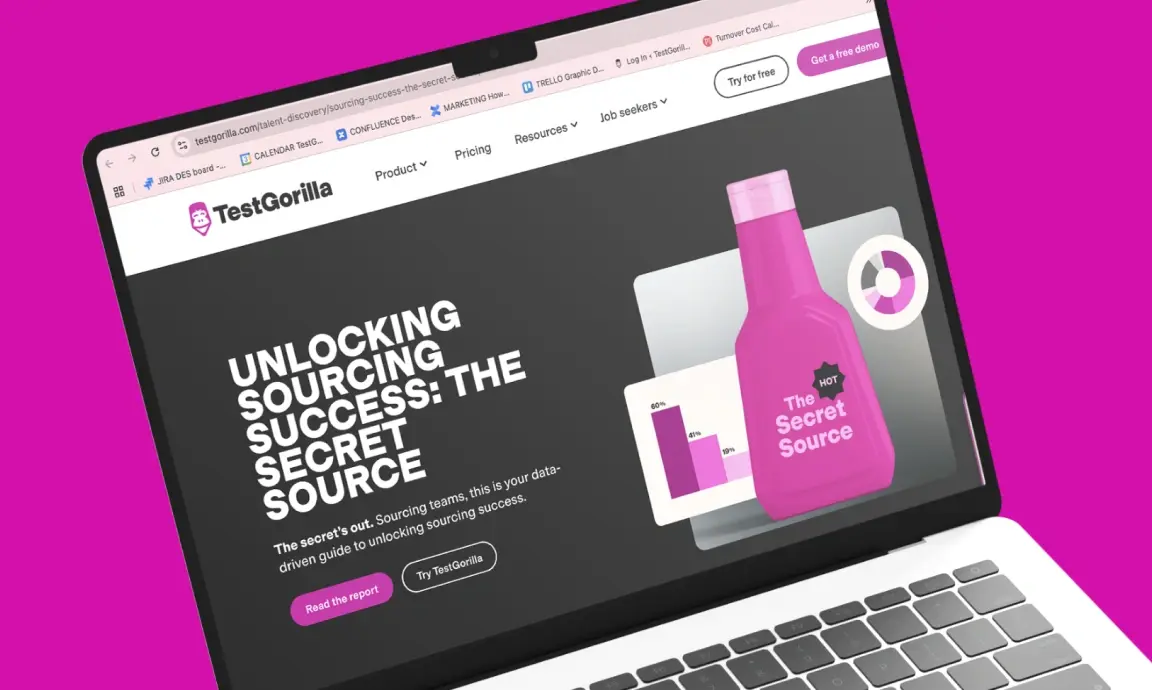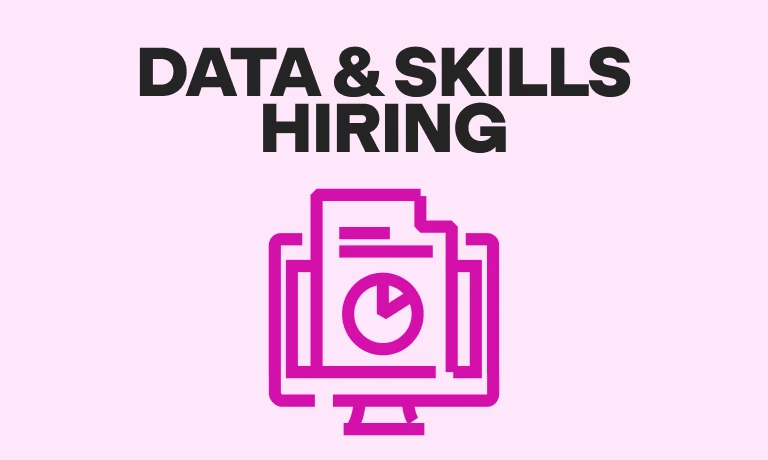Table of contents
Did you know that since 2019, people in the US spend more time on their mobile devices than they spend watching TV? People spend on average almost 3 hours per day on their smartphones—and because of this, mobile recruitment is a must in today’s marketplace.
85% of adults in the US own a smartphone and more than 20% of them check their phone every few minutes, so adapting your hiring strategy to mobile is essential.
Mobile recruiting is becoming one of the main pathways to recruiting millennials and gen-Z members. And not just them: everyone’s on their smartphones, including the top-tier talent that you’re looking to recruit. With that in mind, let’s see what exactly mobile recruiting is and how it works.
What is mobile recruiting?
Mobile recruiting is an umbrella term for all recruiting strategies that cover sourcing, finding, attracting, engaging, and converting candidates via mobile devices.
As most adults in the US own a smartphone, it’s only natural that many of them will be using it to search for their next job. They use and follow the most common mobile recruiting channels, like job boards and social media sites.
Recruiters usually rely on phone calls, emails, and text messages to engage their candidates, but those channels come with their limitations. Around 79% of job seekers use social media to search for their next role, and that number is even higher for younger audiences, at 86%. This is why recruiters need to start using mobile recruiting: their target audience is already there and it’s a perfect opportunity to start connecting with potential applicants.
So if you haven’t yet embraced mobile recruiting in your company, this is a great time to start.
In fact, the term “mobile recruiting” has two different meanings:
Engaging candidates via mobile
Recruiting via mobile.
Let’s look into each one.
Engaging candidates via mobile
Engaging candidates via mobile is one of the ways you can tailor your strategy to mobile recruiting. You can use mobile recruiting to find, place, and engage candidates, which means that your website and your ATS (applicant tracking software – more on this later) will need to be optimized to deliver a good mobile experience.
One of the best ways to stay in touch with your candidates is via text messaging (SMS). The reason is that most candidates quickly open and read the SMS they receive: one study showed that SMS has a 98% open rate and more than 60% of people read text messages within 5 minutes. That’s an extremely high open and read rate, which you won’t ever see with traditional channels, such as email or even phone calls.
Also, text messaging is becoming a new trend in the hiring and recruiting industry: it’s currently one of the fastest-growing communication channels. Because of that, it might be a good idea to find a way to incorporate text messaging in your hiring process to find, engage, and place your candidates.
Recruiting via mobile
Your recruitment process should start with your Customer Relationship Management (CRM) and your ATS, where all of your candidates’ information is stored.
With mobile recruiting, you should be able to do all the activities you would normally do in your CRM or ATS but on a mobile device.
Adding notes and comments via your mobile device as soon as you finish interviewing a candidate is a great way to complete their profile with more information that otherwise would be lost.
What are the benefits of mobile recruiting?
There are multiple benefits of mobile recruiting, and multiple ways to integrate it into your hiring process. Here, we’ve decided to concentrate on four of the most impactful ones, which can have a massive ROI.
Flexibility and outreach
More than half of young Americans) use their smartphones when looking for a new job. And not only that, but when filling out applications, they do it mostly on their phones rather than on a computer. What you can do at your company is to create a mobile app that applicants and candidates would download on their phones.
This is the perfect way to stay connected with not only active candidates who are currently in the middle of your recruiting process but also with passive candidates who aren’t yet applying to open positions or who’re waiting for the perfect role to open.
Also, you can use AI chatbots as job-seeking assistants. The chatbots can keep candidates informed on the status of their applications and answer any questions they might have.
Generally, you can reach more of your candidates via mobile tech and you can do that on a scale, which is a major benefit.
Higher availability
The availability of the tools and systems you’re using is a major benefit when it comes to mobile recruitment: you can add or change information fast, you can access it easier (especially useful when you don’t have your laptop nearby), and you can add notes and comments on the candidates as soon as you interview them (immediately after the interviewing process is completed, you can jump to your ATS or CRM and add interview notes).
This is especially useful for companies that operate in industries where employees need to stay active and do on-site work during most of the day, such as transportation, construction, and also salespeople who spend most of their workday away from the office.
The mobile availability of hiring tools and applications enables you to provide a positive candidate experience and improve your employer branding. It also allows you to react fast and optimize your recruitment process.
Shorter response time
When you communicate on mobile, you enable a two-way communication channel that is super-efficient. This streamlines communication between the hiring manager and the candidates who have applied. If a candidate receives a message; within a few minutes, they will have read it and can respond instantly. Compare this to email correspondence where you have to wait a day or two to get an answer and where messages could get stuck in spam or be accidentally deleted.
With text messaging, you significantly shorten the response time and remove the above-mentioned problems from the equation.
Also, sending a quick acknowledgment of receipt via text message removes any uncertainty on whether your hiring team has received the candidate’s application, further improving your candidate experience and strengthening your employer brand.
Better candidate engagement
With a solid mobile recruitment strategy in place, you’ll have many different ways to keep candidates engaged. Mobile recruitment allows you to send applicants:
Messages
Polls
Pulse surveys
Questionnaires
Not only is this useful during the hiring process, but you can also engage passive or unresponsive candidates from your talent pool with this strategy.
With all these benefits in mind, let’s see how you can implement mobile recruiting in your hiring process.
The best insights on HR and recruitment, delivered to your inbox.
Biweekly updates. No spam. Unsubscribe any time.
How can you build the right mobile recruitment strategy for your organization?
You’ve added some job postings to your social media sites such as Linkedin or Facebook, but what now? Well, you shouldn’t stop there. Here’s a step-by-step process on how to build and implement a comprehensive mobile recruitment strategy.
Make sure development is mobile-first
One mistake many companies make is creating a desktop version of their application form first and then trying to optimize it for mobile. This can lead to multiple bugs in the mobile version, which can deter even the most motivated candidates.
Imagine a candidate filling out a 500-word application on their mobile phone, and pressing “Submit”, only to see an error message and lose all progress. This would definitely be a negative candidate experience, which will erode their trust in your company, and result in application abandonment.
For this reason, the development of the application process needs to be mobile-first. This way, you’ll be able to make sure that applicants opening your job applications on a mobile device will have a positive experience and will complete your application process.
Analyze what your competitors are doing
Sometimes, you don’t need to reinvent the wheel: just look at what others are doing that’s working. Your competition can be a great source of information when building your mobile recruitment strategy.
They might have an innovative way of sending messages, or they might have unique questions that make the hiring process better for candidates. Or they might have a different communication flow with their applicants.
Whatever it is, analyze what your competition is doing and see how you can implement some of the things that are working, without actually copying their hiring process. Your recruitment strategy should always be aligned with the company culture and values of your organization—and your competitors’ hiring process is aligned with theirs. So if you simply copy ideas, there will be a mismatch.
If you haven’t done this yet, it might be a good idea to assess your organizational culture first and see how you can adapt your mobile recruitment strategy to it.
Test your application process internally
The best thing would be for you to try out the application process yourself, and see how you can improve it. Open the platform and fill out the application form. Look for bugs or things that are hard to read or hard to click. Be mindful of questionnaires and assessments that appear to be unnecessarily long: your best candidates might abandon the application process if it’s too long. According to a Hays report quoted by HR Magazine, 73% of candidates abandon applications if they take longer than 15 minutes.
All of this will provide you with first-hand insights and information on what’s great and needs to stay as it is, what’s not working so well and needs to be changed, and what’s still missing that you could incorporate in your application process. Skills assessments are also a great way to optimize recruitment.
Once you’ve tried out the application process yourself, you can further check for blind spots by giving it to your team. Let them go through it themselves so you can get their feedback, too. In the future, you can even integrate a quick poll at the end of the application process, where your candidates rate it (but remember to make it super quick and simple).
By going through this process a few times, you will ensure that candidates receive the best possible recruitment experience, and we all know that happy candidates make happy employees.
What should you look for in mobile recruiting software tools?
When developing your mobile recruitment strategy, a key part of this effort will be figuring out what mobile recruiting software would best meet your needs. There are three things you should take into account when looking for mobile recruiting software:
Integration with your existing ATS. When you’re deciding on which mobile recruitment software to use, you need to make sure that it can be integrated with your ATS. This is your main hub for all candidate information, so you need to check whether all software tools you’ll be using can be connected to it. Otherwise, you might be creating a lot more work for yourself than you anticipated in the first place.
Video interviewing options. One of the best ways to communicate with your candidates is through video interviews, which can either be asynchronous or in real-time. You need to check if your mobile recruitment software has a video interviewing option that you can use to engage with your applicants and interview them. TestGorilla’s custom video response questions enable you to integrate asynchronous interviews into your hiring process effortlessly.
Optimize your Careers page. Your Careers page needs to be optimized for mobile to capture the attention of all those job applicants who’ll search for (and apply to) their next role on a mobile device. Nearly 80% of US job seekers rely mostly on online resources and information, and given that mobile device use is steadily increasing in the past years, it’s essential to make your application process as mobile-friendly as possible.
Why does mobile recruitment matter?
Most people today use their mobile phones extensively when looking for a new job, and will at least check a company’s online presence and search for suitable positions via mobile. So if you’re not reaching the people that are on their smartphones, you’re definitely missing out and might fail to attract some of the best candidates out there.
Mobile recruitment can help you optimize your current hiring process, and keep candidates engaged. It has a number of benefits, such as improving communication and shortening response time, which, in turn, reduces your time-to-hire and helps you use resources more efficiently.
To build a comprehensive mobile recruitment strategy, you should develop a mobile-first application process, try it yourself, and also analyze what your competitors are doing, to stay on top of the latest trends and available tech.TestGorilla’s pre-employment skills tests are mobile-friendly and are optimized for all platforms, guaranteeing a smooth hiring process and a stellar candidate experience. Get started today for free and make better hiring decisions, faster and bias-free.
You've scrolled this far
Why not try TestGorilla for free, and see what happens when you put skills first.




















